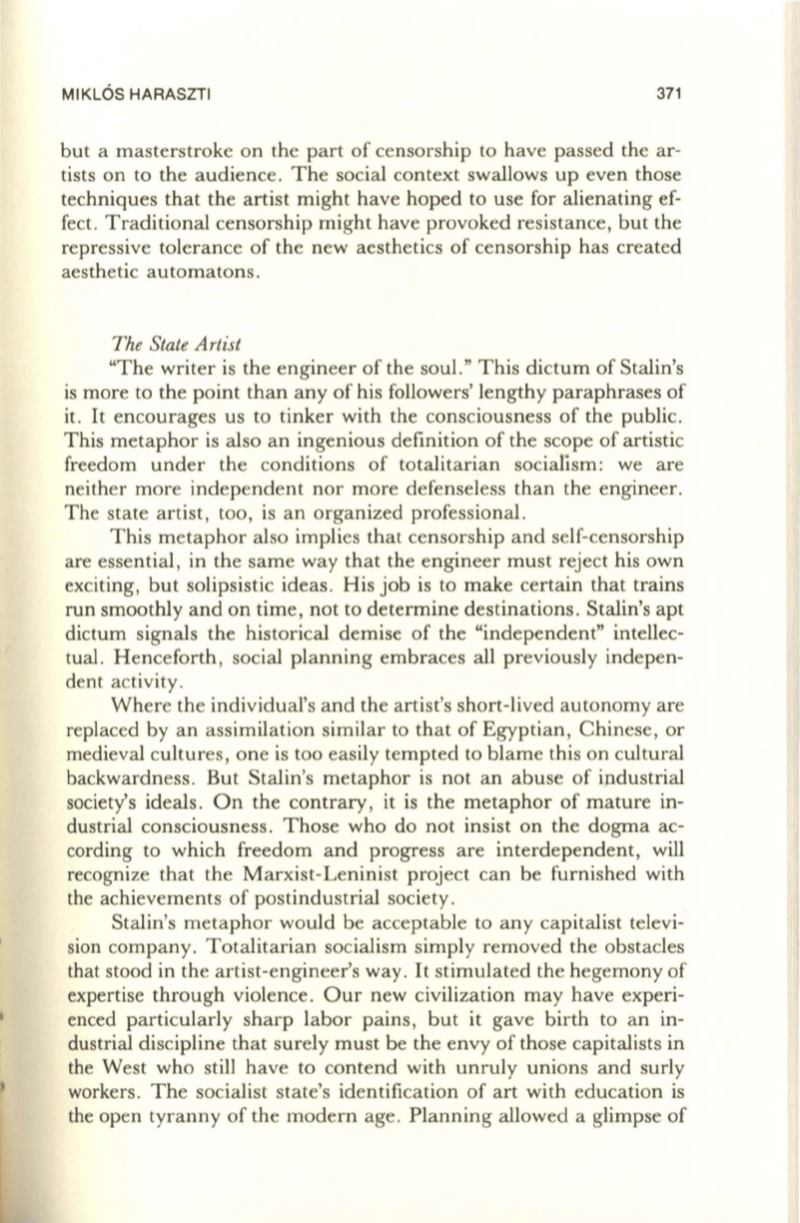
MIKL6s HARASZTI
371
but a masterstroke on the part of censorship to have passed the ar–
tists on to the audience. The social context swallows up even those
techniques that the artist might have hoped to use for alienating ef–
fect . Traditional censorship might have provoked resistance, but the
repressive tolerance of the new aesthetics of censorship has created
aesthetic automatons .
The State Artist
"The writer is the engineer of the soul." This dictum of Stalin's
is more to the point than any of his followers' lengthy paraphrases of
it. It encourages us to tinker with the consciousness of the public.
This metaphor is also an ingenious definition of the scope of artistic
freedom under the conditions of totalitarian socialism: we are
neither more independent nor more defenseless than the engineer.
The state artist , too , is an organized professional.
This metaphor also implies that censorship and self-censorship
are essential, in the same way that the engineer must reject his own
exciting, but solipsistic ideas . His job is to make certain that trains
run smoothly and on time , not to determine destinations . Stalin's apt
dictum signals the historical demise of the "independent" intellec–
tual . Henceforth , social planning embraces all previously indepen–
dent activity.
Where the individual's and the artist's short-lived autonomy are
replaced by an assimilation similar to that of Egyptian , Chinese , or
medieval cultures, one is too easily tempted to blame this on cultural
backwardness. But Stalin's metaphor is not an abuse of ipdustrial
society's ideals. On the contrary, it is the metaphor of mature in–
dustrial consciousness. Those who do not insist on the dogma ac–
cording to which freedom and progress are interdependent, will
recognize that the Marxist-Leninist project can be furnished with
the achievements of postindustrial society.
Stalin's metaphor would be acceptable to any capitalist televi–
sion company. Totalitarian socialism simply removed the obstacles
that stood in the artist-engineer's way. It stimulated the hegemony of
expertise through violence. Our new civilization may have experi–
enced particularly sharp labor pains, but it gave birth to an in–
dustrial discipline that surely must be the envy of those capitalists in
the West who still have to contend with unruly unions and surly
workers . The socialist state's identification of art with education is
the open tyranny of the modern age . Planning allowed a glimpse of


